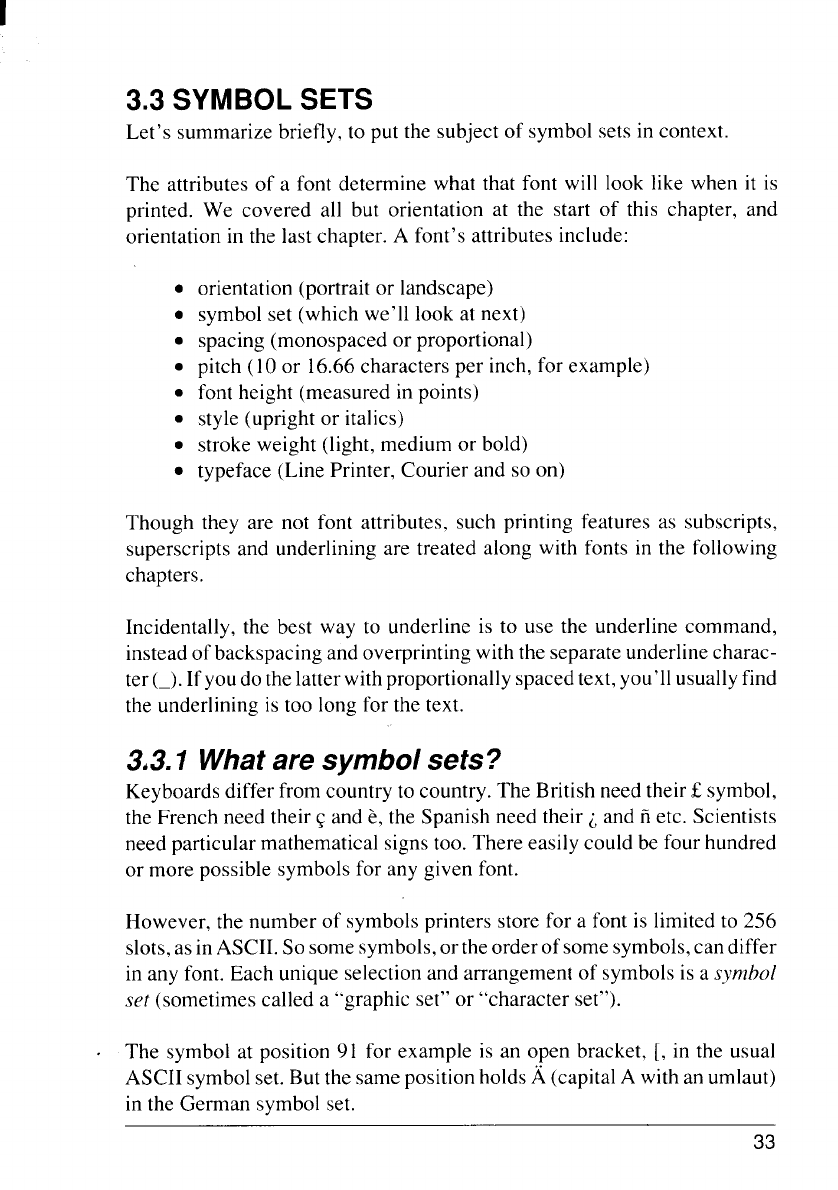
3.3 SYMBOL SETS
Let summarize briefly, to put the subject of symbol sets in context.
The attributes of a font determine what that font will look like when it is
printed. We covered all but orientation at the start of this chapter, and
orientation in the last chapter. A font’s attributes include:
●
●
●
●
●
●
●
●
orientation (portrait or landscape)
symbol set (which we’ll look at next)
spacing (monospaced or proportional)
pitch (10 or 16.66characters per inch, for example)
font height (measured in points)
style (upright or italics)
stroke weight (light, medium or bold)
typeface (Line Printer, Courier and so on)
Though they are not font attributes, such printing features as subscripts,
superscripts and underlining are treated along with fonts in the following
chapters.
Incidentally, the best way to underline is to use the underline command,
instead of backspacing and overprinting with the separate underline charac-
ter (–). Ifyoudothelatterwith proportionally spaced text, you’ll usuallyfind
the underlining is too long for the text.
3.3.1 What are symbol sets?
Keyboards differ from country to country. The British need their f symbol,
the French need their g and 5, the Spanish need their ~ and fietc. Scientists
need particular mathematical signs too. There easily could be four hundred
or more possible symbols for any given font.
However, the number of symbols printers store for a font is limited to 256
slots,asinASCII. So some symbols,ortheorder ofsome symbols,can differ
in any font. Each unique selection and arrangement of symbols is a symbol
set (sometimes called a “graphic set” or “character set”).
. The symbol at position 91 for example is an open bracket, [, in the usual
ASCII symbol set. Butthe same position holds A (capital A with an umlaut)
in the German symbol set.
33


















